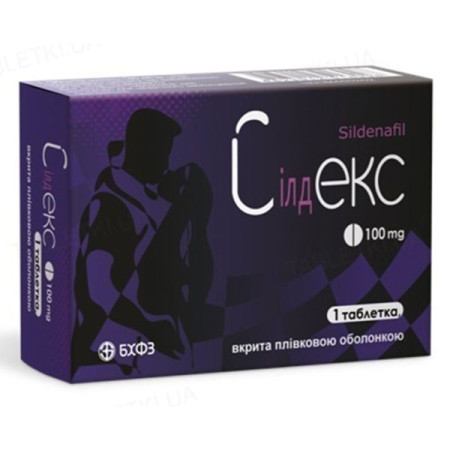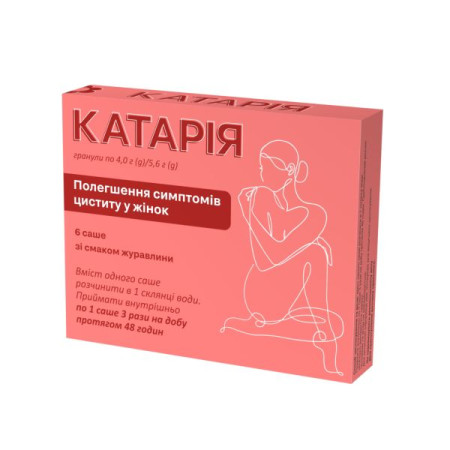Vitamin A soft capsules 100,000 IU blister No. 50

Instructions Vitamin A soft capsules 100,000 IU blister No. 50
Composition
active ingredient: retinol;
for a dose of 33,000 IU
1 capsule contains 33,000 IU of vitamin A;
excipients: sunflower oil; capsule shell: gelatin, glycerin, carmoisine (E 122);
for a dose of 100,000 IU
1 capsule contains 100,000 IU of vitamin A;
excipients: sunflower oil; capsule shell: gelatin, glycerin.
Dosage form
Soft capsules.
Main physicochemical properties:
for a dose of 33,000 IU – soft gelatin capsules of spherical or spherical shape, with a seam, red in color, filled with an oily liquid from light yellow to dark yellow in color;
for a dose of 100,000 IU – soft gelatin capsules of spherical or globular shape, with a seam, from light yellow to dark yellow in color, filled with an oily liquid from light yellow to dark yellow in color.
Pharmacotherapeutic group
Simple preparations of vitamin A. Retinol (vitamin A).
ATX code A11C A01.
Pharmacological properties
Pharmacodynamics.
Vitamin A has a general strengthening effect, normalizes tissue metabolism: participates in redox processes (due to a large number of unsaturated bonds), in the synthesis of mucopolysaccharides, proteins, lipids, in mineral metabolism, in the processes of cholesterol formation. Enhances the production of lipase and trypsin, enhances myelopoiesis, cell division processes. Has a positive effect on the function of the lacrimal, sebaceous and sweat glands; increases resistance to diseases of the mucous membranes of the respiratory tract and intestines; increases the body's resistance to infections. Enhances the reproduction of epithelial skin cells, rejuvenates the cell population and reduces the number of cells undergoing terminal differentiation, inhibits keratinization processes, enhances the synthesis of glycosaminoglycans, activates the interaction of immunocompetent cells among themselves and with epidermal cells. Stimulates skin regeneration. Retinol is a necessary component for the normal function of the retina: it binds to opsin (the red pigment of the retina), forming visual purple - rhodopsin, which is necessary for visual adaptation in the dark.
The local effect is mediated by the presence of specific retinol-binding receptors on the surface of epithelial cells.
Pharmacokinetics.
Vitamin A is almost completely absorbed in the intestines (mainly in the duodenum and rectum). After administration, the maximum concentration of the drug in the blood plasma is observed after 4 hours. Retinol is distributed unevenly in the body. Its greatest amount is found in the liver and retina, it is found in the kidneys, fat depots, adrenal glands and other endocrine glands. Retinol metabolism products are excreted by the kidneys. The half-life is 9.1 hours. Retinol is not detected in the urine of a healthy person, since it is excreted in the bile.
Indication
A-vitaminosis and A-hypovitaminosis.
Eye diseases: retinitis pigmentosa, xerophthalmia, hemeralopia, eczematous lesions of the eyelids, superficial keratitis, corneal lesions, conjunctivitis, pyoderma.
Skin diseases and lesions: frostbite, burns, wounds, ichthyosis, follicular dyskeratosis, senile keratosis, skin tuberculosis, psoriasis, some forms of eczema.
Comprehensive therapy of rickets, collagenoses, and hypotrophy.
As part of the complex therapy of acute respiratory diseases that occur against the background of exudative diathesis, chronic bronchopulmonary diseases; inflammatory, erosive-ulcerative lesions of the intestine, liver cirrhosis.
Contraindication
Hypersensitivity to the components of the drug, acute and chronic nephritis, heart failure of II-III degree, cholelithiasis, chronic pancreatitis, hypervitaminosis A, retinoid overdose, hyperlipidemia, obesity, chronic alcoholism, sarcoidosis (including history).
Interaction with other medicinal products and other types of interactions
Estrogens and oral contraceptives containing them increase the absorption of retinol, which can lead to the development of hypervitaminosis A. Cholestyramine, colestipol, mineral oils, neomycin reduce the absorption of vitamin A (its dose may need to be increased). Nitrites impair the absorption of retinol.
During long-term therapy with tetracyclines, it is not recommended to prescribe vitamin A in high doses (50,000 IU and above) due to the increased risk of developing intracranial hypertension. Retinol weakens the effect of Ca2+ drugs, increases the risk of developing hypercalcemia. Isotretinoin increases the risk of toxic effects.
Vitamin E reduces the toxicity, absorption, and hepatic deposition of vitamin A; high doses of vitamin E can deplete vitamin A stores in the body. Retinol reduces (mutually) the risk of hypervitaminosis D. Corticosteroids and alcohol consumption reduce the therapeutic effect of the drug. Concomitant administration of vitamin A and anticoagulants increases the tendency to bleed. Retinol reduces the anti-inflammatory effect of glucocorticoids.
Application features
The drug has the property of accumulating and remaining in the body for a long time, therefore, the drug should not be taken simultaneously with other drugs that contain vitamin A. Prolonged daily use of the drug, especially in large doses, may cause the development of hypervitaminosis A.
Use with caution in diseases accompanied by impaired blood clotting or bleeding, loss of calcium in the body, severe liver damage, acute and chronic hepatitis. To monitor liver function, a biochemical blood test should be performed before and during treatment.
It is not recommended to use the drug during long-term therapy with tetracyclines.
Retinol should be taken 1 hour before or 4-6 hours after taking cholestyramine.
For normal absorption of vitamin A, the presence of fats in food is a necessary condition.
Alcohol and tobacco abuse disrupts the absorption of the drug from the digestive tract.
Use during pregnancy or breastfeeding
Given the high dose of vitamin A, this medicine is contraindicated during pregnancy or breastfeeding.
Ability to influence reaction speed when driving vehicles or other mechanisms
There is no evidence that retinol can affect the speed of psychomotor reactions when driving vehicles or working with precise mechanisms.
Method of administration and doses
Retinol is used for therapeutic purposes in adults with moderate and mild avitaminosis. The drug should be taken orally 10-15 minutes after meals.
Given the ability of vitamin A to accumulate in the body, before taking the drug, attention should be paid to the dose of retinol palmitate (especially when using capsules of 100,000 IU).
The daily dose for adults should not exceed 100,000 IU.
For therapeutic purposes, in case of mild and moderate avitaminosis, adults are prescribed up to 33,000 IU per day, in case of eye diseases - 33,000-100,000 IU per day. In case of skin diseases, adults are prescribed 33,000-100,000 IU per day.
The doses and duration of treatment with Vitamin A are determined individually by the doctor.
Children. The drug is contraindicated in children.
Overdose
Symptoms: severe headache, dizziness; drowsiness, confusion, visual disturbances, convulsions, uncontrollable vomiting, profuse diarrhea, severe dehydration, irritability; on the second day, a widespread rash appears with subsequent large-scale peeling, starting from the face; bleeding gums, dryness and ulceration of the oral mucosa, peeling lips, palpation of long tubular bones is sharply painful due to subperiosteal hemorrhages, pain in the joints and muscles.
Treatment: symptomatic; as an antidote, prescribe thyroxine, as well as ascorbic acid.
Side effects
On the part of the digestive system: loss of appetite, dry mouth, stomach pain, vomiting, nausea.
From the liver and biliary system: hepatotoxic phenomena, portal hypertension.
On the part of the skin and subcutaneous tissue: cracks and dryness of the skin, lips, yellow-orange spots on the soles, palms, in the nasolabial triangle area, subcutaneous edema, in some cases, on the first day of use, itchy maculopapular rashes may occur, which requires discontinuation of the drug.
From the nervous system: asthenia, excessive fatigue, drowsiness, discomfort, headache, irritability, intraocular hypertension, visual impairment, gait disturbance.
From the endocrine system: oligomenorrhea.
From the urinary system: pollakiuria, nocturia, polyuria.
From the blood system: hemolytic anemia.
Musculoskeletal system: bone pain, changes in bone X-rays, cramps.
Others: hyperthermia, hair loss, photosensitivity, weight loss, hypercalcemia; hypersensitivity reactions are possible when using the drug.
With a decrease in the dose or with temporary discontinuation of the drug, side effects disappear on their own.
In skin diseases, the use of high doses of the drug after 7-10 days of treatment may be accompanied by an exacerbation of the local inflammatory reaction, which does not require additional treatment and further decreases. This effect is associated with the myelo- and immunostimulating effect of the drug.
Expiration date
2 years.
Storage conditions
Store in the original packaging at a temperature not exceeding 25 °C.
Keep out of reach of children.
Packaging
For a dose of 33,000 IU.
10 capsules in a blister; 3 blisters in a pack.
10 capsules in a blister; 5 blisters in a pack.
20 capsules in a blister; 1 blister in a pack.
20 capsules in a blister; 3 blisters in a pack.
For a dose of 100,000 IU.
10 capsules in a blister; 3 blisters in a pack.
10 capsules in a blister; 5 blisters in a pack.
20 capsules in a blister; 1 blister in a pack.
20 capsules in a blister; 3 blisters in a pack.
Vacation category
Without a prescription.
Producer
JSC "KYIV VITAMIN FACTORY".
Address
Ukraine, 04073, Kyiv, Kopylivska St., 38.
Website: www.vitamin.com.ua.
There are no reviews for this product.
There are no reviews for this product, be the first to leave your review.
No questions about this product, be the first and ask your question.














